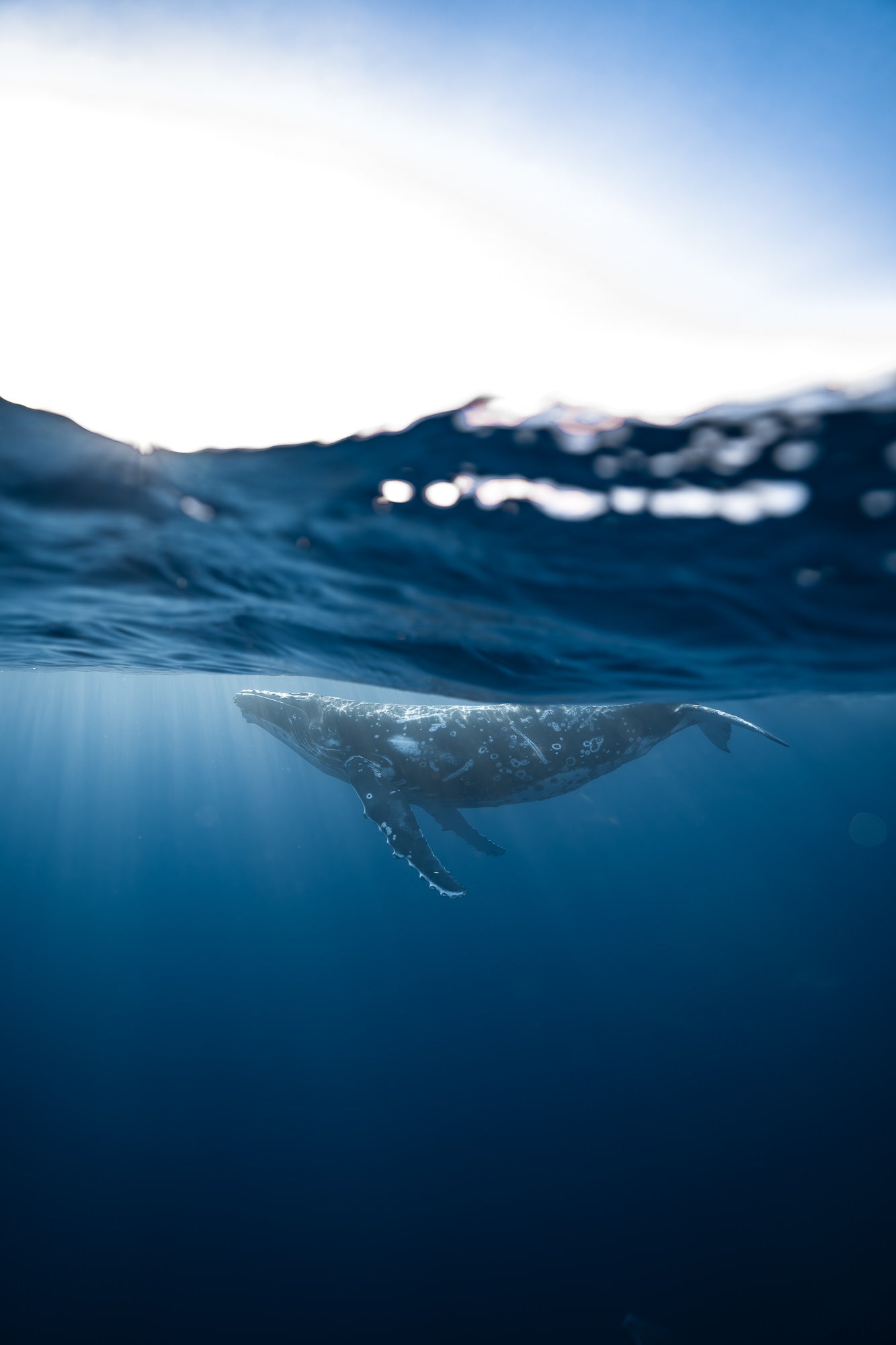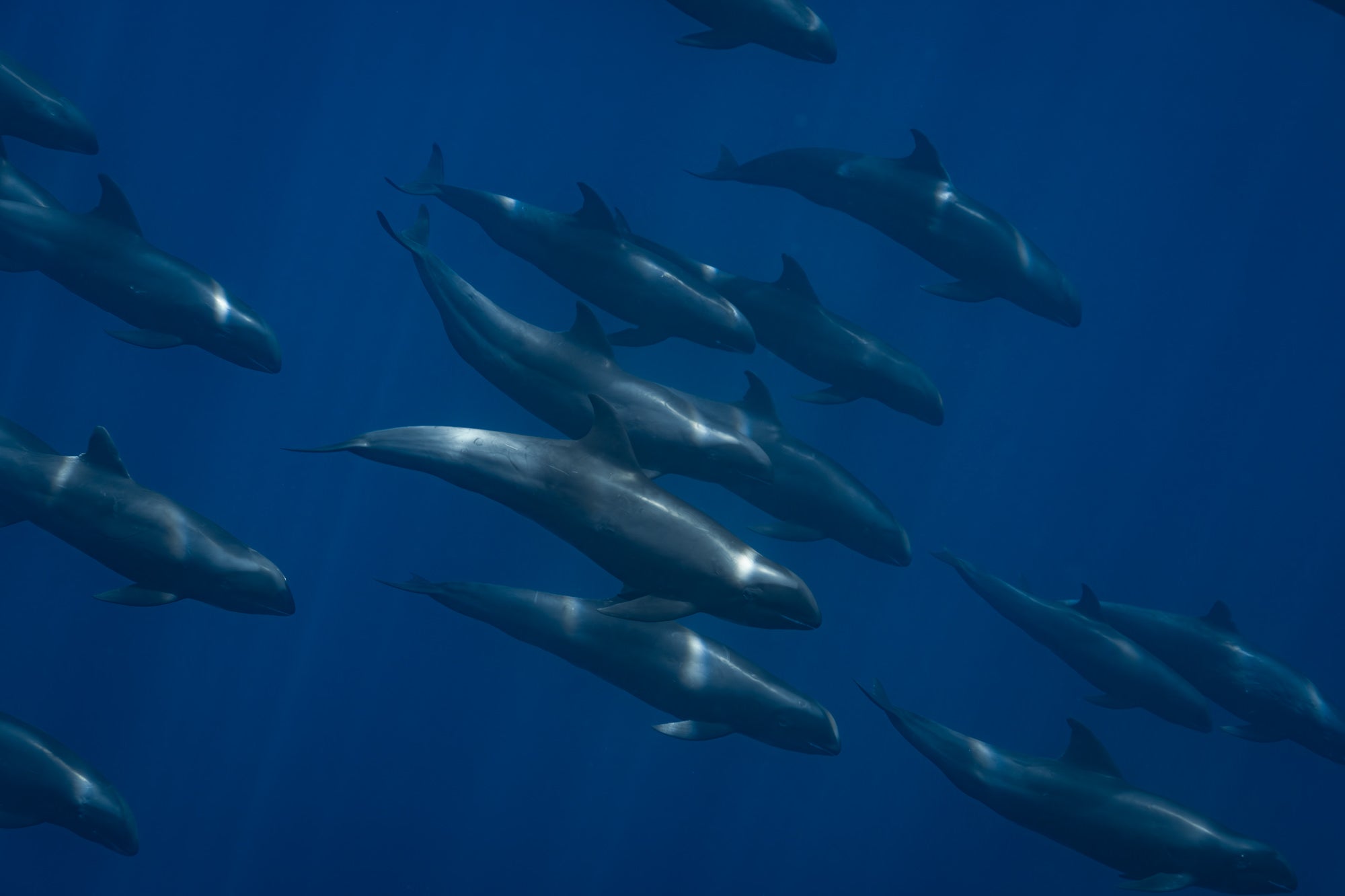Photographer, videographer and freediver Josh Munoz (@joshmunoz) says he would rather be barefoot than wearing shoes, and he would rather be surrounded by water than just looking at it. “Going underwater is an amazing feeling,” he explains. “Time stops and everything goes silent. You feel yourself underwater. You feel your heartbeat, feel your blood moving around your body as you use your muscles as effortlessly as you can. And then you get to sit in peace and quiet while you watch schools of fish, sharks, dolphins or whales swim around.” He likes to capture these moments, both in photo and video, with his Sony Alpha 1 and a select group of G Master lenses. We caught up with him to learn more about his hybrid shooting kit – keep reading as he shares what’s in his bag.
Product Preview – In This Article You’ll Find:
–Sony Alpha 1
–Sony 16-35mm f/2.8 G Master
–Sony 70-200mm f/2.8 G Master II
–Sony 14mm f/1.4 G Master
–Sony 24-70mm f/2.8 G Master

Camera
Sony Alpha 1: Years ago when I was upgrading cameras I knew I wanted something that was small and lightweight. For years I had been carrying around a bulky camera body that weighed a lot, lenses included. That’s when I switched to Sony, specifically the Sony Alpha 1. Compact for travel, not heavy in my pack, and in turn the water housing that fits is usually a bit smaller and cheaper. I absolutely love this camera body. The ability to shoot in 4k at 120 fps and take high pixel images at a super fast frame rate is necessary for underwater photographers. Plus features like custom buttons and recall buttons make shooting above or below water so simple. Truly I feel like I don't ever miss a shot now shooting with the Alpha 1.

Photo by Josh Munoz. Sony Alpha 1. Sony 16-35mm f/2.8 G Master. 1/250-sec., f/2.8, ISO 200
Lenses
Sony 16-35mm f/2.8 G Master: My go-to lens when diving underwater. This is what I use 90% of the time. Anything wider than this underwater and you run the risk of blurring the corners or your subject just looking too far away. It's also not as common that large wildlife comes so close that you need something wider than 16mm. For professional use this is the “safest” option of lenses. You will always get the shots you need with this focal length.

Photo by Josh Munoz. Sony Alpha 1. Sony 16-35mm f/2.8 G Master. 1/200-sec., f/8, ISO 500
Sony 70-200mm f/2.8 G Master II: Recently I have started taking this lens underwater with me. Holy smokes, is it fun! Sometimes it feels like things are a bit too close so it can’t be used in every situation, but the detail you can capture with this underwater is wild. The speed and intelligence of this lens paired with a powerful camera body make shooting video so simple and the lens has no problems keeping focus even while tracking.

Photo by Josh Munoz. Sony Alpha 1. Sony 70-200mm f/2.8 G Master II. 1/250-sec., f/7.1, ISO 200
Sony 14mm f/1.4 G Master: My favorite lightweight travel lens and my number one vlogging lens. This lens is so small and lightweight it’s so simple to throw in your pack to have with you wherever you go. With a 14mm angle and no fish eye effect it’s great for all selfie filming or large landscape photography.
Sony 24-70mm f/2.8 G Master: My favorite all around lens. Not super wide and just enough zoom for most situations! This is the perfect run and gun style lens. My go-to street photography lens and in most housings it's compatible with zoom gear so you have the ability to zoom in and out for the best focal length depending on the situation.
Accessories
Nauticam Housing With Zen Dome: Don't pinch pennies when it comes to what you put your camera in when diving. Nauticam is the best for underwater housings, allowing you full control of every button and function of your camera. Zen dome is also the best option of domes with the material it’s made out of and zero light reflection on your images.
Alchemy Dive Fins & Mask:Carbon fiber diving fins are very important to move around the water with the least amount of effort and oxygen burn, especially when holding my breath for an extended period of time for a shot. A nice comfortable and clear dive mask is crucial as well to see everything properly.
Peak Design Tripod: All photographers should have a tripod in their arsenal of gear. This tripod is great for travel and is sturdy enough to give me confidence it won’t accidentally tip over. Most underwater housings give you the option to connect to one as well which is great to anchor the housing underwater in certain situations.

Photo by Josh Munoz. Sony Alpha 1. Sony 16-35mm f/2.8 G Master. 1/400-sec., f/5, ISO 250
Sun Protection & Water: All day in the ocean means you need to be covered up and hydrated! Reef safe sunscreen like Avasol and gloves are something you’ll always see me wearing to cover up from the sun.
Water Housing Cleaning Gear: Cleaning and caring for your gear is so important if you use it often and want it to last. Properly washing down your housing and then drying all the water with a hand pump is a vital part of caring for your gear!
See more of Joshua Munoz’s work on Instagram @joshmunoz, his YouTube Channel and on his website – joshmunozphoto.com.















